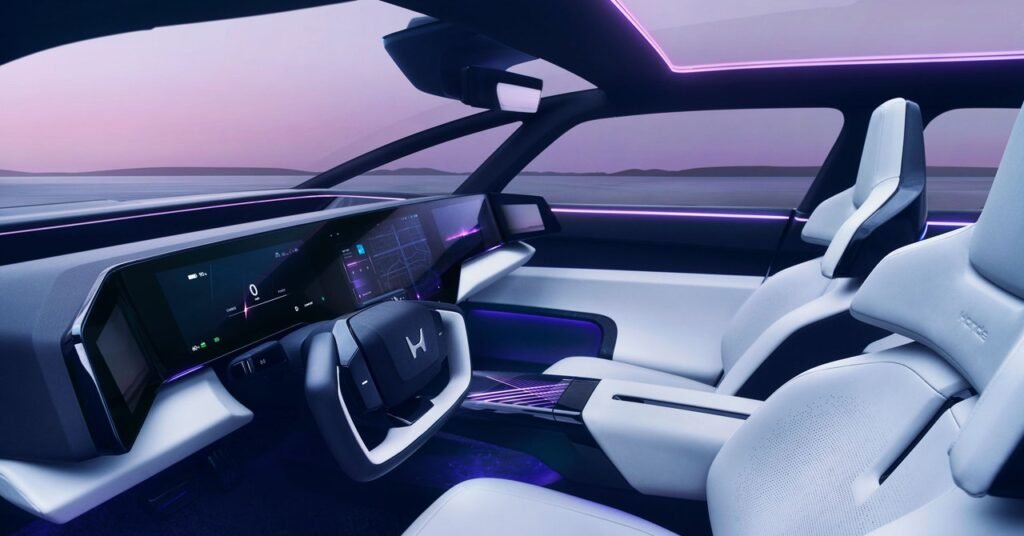Honda believes you want to talk to your car.
The Japanese automaker this week shared new details about its 0 Series, its latest foray into electric vehicles. Two EVs, the 0 Saloon and the 0 SUV, will debut in 2026, with rounded, offbeat styling that whispers the future. The electric element is just a bit part of the innovation planned, Honda executives promised onstage at CES in Las Vegas. In a presentation during the show, Honda electrification head Katsushi Inoue emphasized the “new level of intelligent vehicle technology” built into the 0 series.
“The Honda approach to the art of making things has always been human-centric,” he said, then showed off sort of the opposite: a talking robot built right into the car.
To show the robot in action, Honda then screened a short video that showed a driver speaking intimately with the Her-like system that lives inside her electric car, with the chatbot embodied by a Siri-like animation on the dash. “Saloon is my partner, always by my side, opening me up to new experiences and expanding my world,” the theoretical Saloon driver said during the promotional video. “Tell me more about yourself,” the car said. “Of course,” the driver answered.
The 0 Series will come with a new operating system, Asimo, named after Honda’s path-breaking robot from the 1980s. This onboard OS is designed to continuously update its experience according to the preferences of the driver. The system “will allow Honda to deliver a personalized ownership experience that will enhance the joy of driving,” the automaker said in a press release.
Indeed, the evidence that automakers are hoping to reshape drivers’ intimate relationships with their cars was all over Las Vegas.
“It was a theme across CES: You’re talking to a machine. You’re not connecting to humans,” says Jessica Caldwell, the director of insights at Edmunds. “Everywhere you look, there are robots.”
Many automakers and suppliers rolled out experiences and design updates laser focused on adapting to drivers’ preferences through software systems and interiors—and finding new ways to make them happy inside the closed (and maybe lonely?) cabin.




